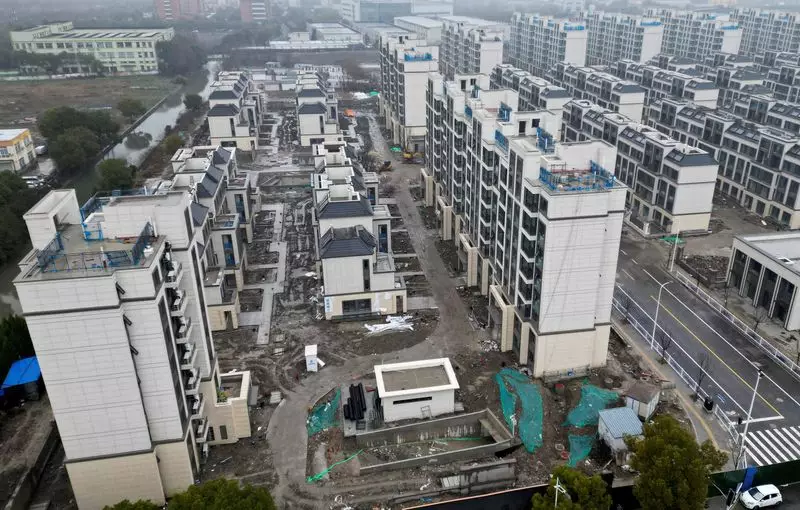As the Chinese economy grapples with slowing growth, the property sector—an essential pillar of economic stability and expansion—has taken a significant hit. Recent statistics indicate that new home prices have plummeted at an alarming rate, reaching their fastest decline in over nine years. In addition, property sales have seen a staggering drop of 18% in the initial eight months of the year. This downturn reflects a broader crisis affecting not just real estate but also the economy at large, where consumer confidence remains shaky as households tighten their belts.
Recognizing the gravity of this situation, the People’s Bank of China (PBOC), the nation’s central bank, has announced a series of measures aimed at stimulating the beleaguered property market. The directive for commercial banks to lower mortgage rates on existing home loans is the latest effort in a range of strategies aimed at reviving consumer interest and investment in the real estate sector.
The PBOC has mandated that banks reduce existing mortgage rates to at least 30 basis points below the Loan Prime Rate (LPR), with an average reduction of around 50 basis points anticipated. This initiative, set to be implemented before October 31, aims to alleviate the financial burdens facing homeowners, thus encouraging spending and restoring consumer confidence in the property market.
Furthermore, various cities, like Guangzhou, have taken drastic measures by lifting all restrictions on home purchases. Meanwhile, metropolitan hubs such as Shanghai and Shenzhen are also easing rules regarding non-local buyers and lowering the minimum down payment for first-time homebuyers to a more manageable 15%. These coordinated efforts highlight a concerted push across different levels of government to bolster the housing market and revive economic momentum.
Despite these ambitious measures, the stimulus strategies so far have struggled to translate into a tangible upturn in sales or an increase in market liquidity. There lies a significant gap between policy intentions and actual consumer behavior. Many prospective buyers are still hesitant, perceiving the real estate market as unstable or lacking in long-term viability. This trepidation resonates through various demographics, with existing homeowners feeling particularly stranded under oppressive loan conditions.
Historically, previous reductions in mortgage rates primarily benefited new buyers, leaving existing homeowners to contend with higher interest rates. This disparity led to a surge of early mortgage repayments, which inadvertently restricted consumer spending and dampened overall economic growth. Moving forward, the PBOC’s recognition of these flaws in the existing mortgage rate pricing mechanism speaks to a fundamental shift in policy approach that prioritizes systemic equity and consumer relief.
The ramifications of these measures extend beyond the confines of the real estate market. With the home buying sentiment being closely tied to consumer spending, the PBOC’s strategy underscores the urgent need to stimulate broader domestic consumption. By alleviating the financial burdens of homeowners, the government seeks to reignite a cycle of spending that can, in turn, stimulate various sectors of the economy.
Moreover, the PBOC’s extension of supportive measures for real estate development loans and trust loans until the end of 2026 further indicates a long-term commitment to bolster the sector. Addressing developers’ financing demands is crucial not only for stabilizing the market but also for ensuring that urban infrastructure projects continue unhindered, promoting sustained economic growth.
While the Chinese government is making significant strides to support the struggling property market, the success of these initiatives will largely depend on public perception and willingness to engage with the market. The measures unveiled by the PBOC represent a critical adjustment to the existing strategy, emphasizing the need for a balanced approach that benefits both new and existing homeowners. Only through restoring consumer confidence and fostering sustainable economic growth can China hope to navigate its current economic challenges and emerge resilient in the years to come. As these policies roll out, the Chinese populace will be watching closely, hoping that they yield the revitalization necessary for a dynamic and robust property market.


Leave a Reply